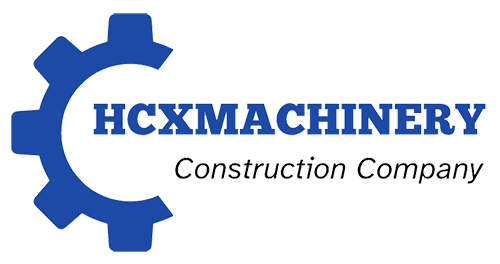When you think about large-scale construction projects, the sight of massive machines digging, lifting, and shifting earth is almost always a part of the picture. Among these machines, excavators are some of the most common and versatile tools on the job site. But did you know there are two main types of excavators? These are the hydraulic construction excavator and the wheeled construction excavator. In this article, we’ll break down the differences between the two, how they work, and what makes each of them unique.
What is a Hydraulic Construction Excavator?
A hydraulic construction excavator (also known as a crawler excavator) is one of the most powerful and widely used types of excavators. As the name suggests, these machines rely on hydraulic systems to operate their boom, arm, bucket, and other parts of the machine. The hydraulic fluid helps generate the force needed for lifting, digging, and swinging heavy loads.
Key Features:
- Tracked Wheels (Crawlers): Hydraulic excavators usually have large, heavy-duty tracks instead of regular tires. This gives them stability on uneven terrain, making them ideal for rough or off-road conditions.
- Power and Versatility: The hydraulic system is extremely powerful, allowing the excavator to perform a variety of tasks such as digging, lifting, and even demolition. The boom, arm, and bucket can be controlled with great precision and power.
- Ideal for Tough Conditions: These excavators excel in harsh environments such as construction sites, mines, and quarries, where stability and power are required to handle heavy loads and deep excavations.
Advantages:
- Stability: The large tracks distribute the weight of the machine evenly, giving it a high level of stability on soft or uneven ground.
- Powerful Digging Ability: The hydraulic system allows for digging deep into the earth, even in tough soil conditions.
- Durability: Hydraulic excavators are built to handle rough terrain and tough conditions, meaning they last longer in demanding work environments.
Disadvantages:
- Slower Mobility: Since they have tracks instead of wheels, hydraulic excavators are slower to move from one location to another compared to wheeled machines.
- Less Maneuverable in Tight Spaces: The bulky tracks can make it challenging to navigate in smaller or more confined areas.
What is a Wheeled Construction Excavator?
A wheeled construction excavator, on the other hand, is a more mobile version of the typical excavator. While it still uses hydraulics for lifting, digging, and other operations, it’s designed with wheels instead of tracks. This gives it some different advantages and disadvantages when compared to its tracked counterpart.
Key Features:
- Wheels instead of Tracks: Wheeled excavators have rubber or steel wheels, which make them faster and more agile on hard surfaces like asphalt and concrete.
- Faster Movement: Unlike tracked excavators, wheeled excavators can move quickly from one location to another. This is particularly useful on jobs that require travel between different areas of a site or even between job sites.
- Urban and Roadwork Focus: Wheeled excavators are often chosen for tasks in urban environments or for roadwork, as they are quicker and more efficient on smooth, hard surfaces.
Advantages:
- Speed and Mobility: The wheeled design makes these excavators faster and more efficient at moving from one location to another, making them ideal for projects that cover large areas.
- Better for Urban Areas: Since they are easier to move and more agile on paved surfaces, wheeled excavators are excellent for projects in crowded or urban environments.
- Lower Ground Damage: Wheeled excavators tend to cause less ground damage on paved surfaces, compared to tracked excavators, which can leave deep ruts.
Disadvantages:
- Less Stability: On soft or uneven ground, wheeled excavators can be less stable than tracked ones. They may struggle to operate on soft dirt or mud without additional support.
- Lower Digging Power: While still powerful, wheeled excavators generally don’t have the same sheer digging capacity as hydraulic tracked excavators.
When to Use Each Type?
- Hydraulic Construction Excavator: If your project involves heavy digging in challenging or off-road conditions (like construction in a quarry, heavy landscaping, or excavation on uneven terrain), a hydraulic excavator is the better choice. Their power and stability allow them to tackle the toughest tasks.
- Wheeled Construction Excavator: For projects that require quick movement across hard, smooth surfaces, like urban construction or roadwork, a wheeled excavator is ideal. Its speed and maneuverability make it perfect for tasks that involve frequent relocation.
Final Thoughts
Both hydraulic and wheeled construction excavators have their place on the job site, and the right choice depends largely on the type of work and the environment. Hydraulic excavators excel in power, stability, and versatility, while wheeled excavators offer speed and agility, especially in urban environments or on flat, paved surfaces.
When choosing between the two, consider the terrain, the scale of the job, and how much mobility you need. With the right equipment for the job, construction projects can move more smoothly, efficiently, and safely.
We hope this guide helps you better understand the key differences between hydraulic and wheeled construction excavators. Whether you’re digging deep into the earth or moving from site to site, there’s an excavator built to make your work easier!

